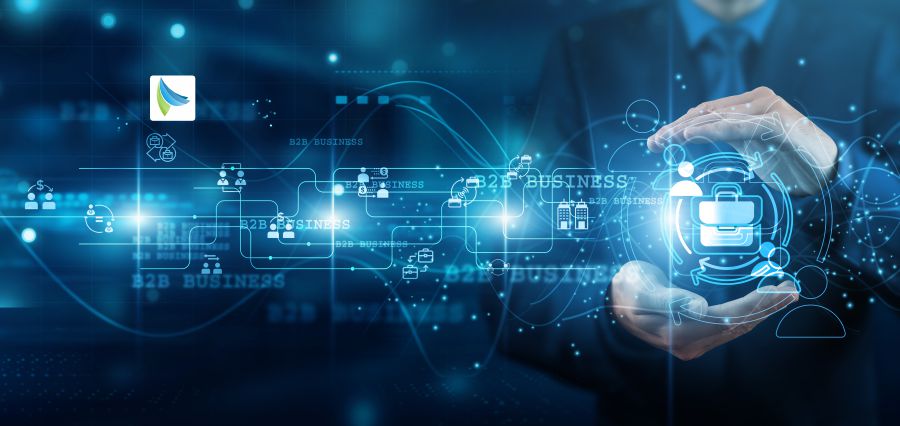Technology is changing at a rate never seen before, transforming sectors and redefining the manner in which we work, communicate, and engage with the environment. With digitalization opening up at a fast rate, new trends await to transform the manner in which business is conducted, the manner in which companies engage with consumers, and even the manner in which society develops. From blockchain to virtual digital worlds and Artificial Intelligence (AI), these new technologies not only make life more efficient but also provide opportunities for future development and innovation. Organizations must stay alert to these trends if they wish to be competitive and future-proof themselves in a world where they are more and more integrated.
Artificial Intelligence and Machine Learning: From Automation to Intelligence
Artificial Intelligence (AI) and Machine Learning (ML) became overnight phenomena that transformed from niche technologies to central enablers that drive applications across the board. In the beginning, AI was considered to be utilized mainly for automation of tasks, but what the world has achieved today is light years ahead of that. AI is now being applied to enhance decision-making, drive recommendation engines, spark customer insights, and run sophisticated processes. Artificial intelligence (AI), Natural Language Processing (NLP), and computer vision have now become mature, and machines can read and understand human language and visual inputs with high precision. All these are changing sectors like the healthcare industry, where AI helps in diagnosis, and the financial sector, where it identifies fraud in real time.
One of the most astounding technologies of the last few years is generative AI, which enables systems to generate new content as images, text, music, and even code. Technologies such as ChatGPT and other large language models are industry-wide being adopted to use for as varied a range as content creation through to personalized customer experience. Furthermore, no-code and low-code AI platforms are opening up AI for non-technical professionals to design and deploy smart applications. The technologies carry risks with regard to data privacy, algorithmic discrimination, and use ethics.
Metaverse and Extended Reality: Remaking Online Life
The metaverse—a continuous, universal virtual space in which people come together living in digital social lives in the form of avatars—increasingly is becoming reality every day. It was science fiction’s territory but now is the part of an evolving digital economy. Meta, Microsoft, and Apple are building infrastructure to bring rich digital experiences with Augmented Reality (AR), Virtual Reality (VR), and Mixed Reality (MR) under the banner of Extended Reality (XR). These technologies are revolutionizing the way people engage with content, work remotely, and buy things online.
Use cases for XR reach far beyond gaming and entertainment. In schooling, virtual reality is utilized in simulation of real environments for experiential learning. Surgeons practice on VR-based simulators for surgery, and architects use AR to see building plans in real space. Virtual worlds provide a greater sense of presence and interactivity closer to working together in the same physical space than static video conferencing tools. As hardware becomes better and cheaper, adoption will speed up. But mainstream adoption of the metaverse and XR also comes with its negatives, like protecting users’ privacy, solving digital identity, and making virtual worlds accessible and inclusive.
Blockchain, Web3, and the Emergence of Decentralized Technologies
Blockchain technology dominated the last ten years because of the shift in digital currency. The applications go far beyond. Blockchain gives us an immutable, decentralized, tamper-evident records system perfect for use in situations where there should be trust, transparency, and accountability. Blockchain applies to supply chain management, digital identity, intellectual property rights, and so much more. Among the important things that blockchain makes possible is the possibility of applying smart contracts, which can automate enforcing contracts when specific triggers are accomplished.
Very similar to blockchain is the general concept of Web3, where a decentralized internet will be built where users will own and have access to their own data and digital assets. Unlike Web2, whose websites use users’ data for gain, Web3 will seek to give users more power and ownership. This is enabling creators and communities to construct and own decentralized applications (dApps) on blockchain networks. Non-fungible tokens (NFTs) also provide a solution for the establishment of ownership and legitimacy in digital spaces, the uses of which span digital art and gaming to virtual properties. Web3 technology and blockchains have issues, though. These include regulatory uncertainty, scalability, and energy consumption.
Conclusion
Technology’s future is being defined by a confluence of strong digital forces that are remaking the world. Artificial Intelligence is evolving from automation to intelligent systems with decision and learning capabilities. The metaverse and Extended Reality are transforming the manner in which human beings relate to the virtual world, opening up new paths in work, learning, and entertainment. Blockchain and Web3 are compelling the use of decentralized virtual spaces where openness and user control take center stage. To compete and remain agile in the rapidly changing global environment, organizations are required to implement these technologies fast. It involves not just investing in infrastructure and human capital but establishing ethical and regulatory standards to allow for their implementation.
Read More: GCC Exchange: Best Money Transfer & Foreign Exchange Brand in the Middle East 2025














